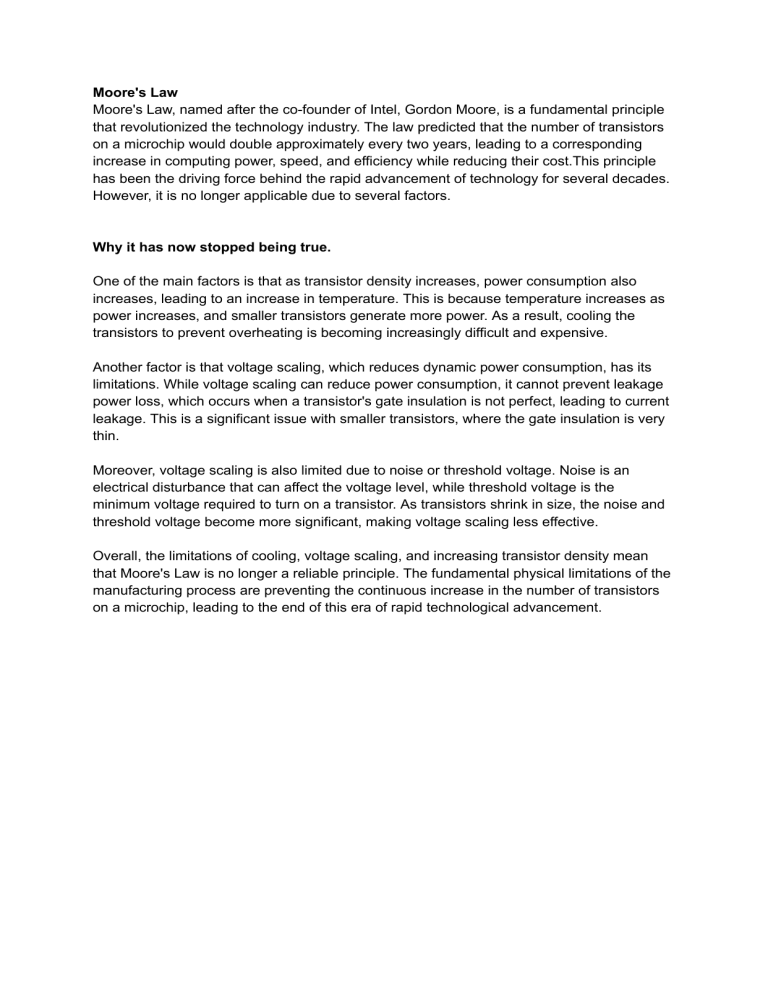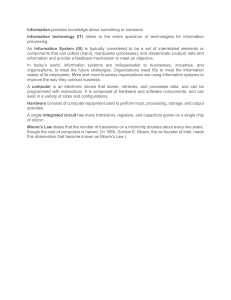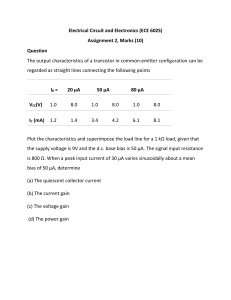
Moore's Law Moore's Law, named after the co-founder of Intel, Gordon Moore, is a fundamental principle that revolutionized the technology industry. The law predicted that the number of transistors on a microchip would double approximately every two years, leading to a corresponding increase in computing power, speed, and efficiency while reducing their cost.This principle has been the driving force behind the rapid advancement of technology for several decades. However, it is no longer applicable due to several factors. Why it has now stopped being true. One of the main factors is that as transistor density increases, power consumption also increases, leading to an increase in temperature. This is because temperature increases as power increases, and smaller transistors generate more power. As a result, cooling the transistors to prevent overheating is becoming increasingly difficult and expensive. Another factor is that voltage scaling, which reduces dynamic power consumption, has its limitations. While voltage scaling can reduce power consumption, it cannot prevent leakage power loss, which occurs when a transistor's gate insulation is not perfect, leading to current leakage. This is a significant issue with smaller transistors, where the gate insulation is very thin. Moreover, voltage scaling is also limited due to noise or threshold voltage. Noise is an electrical disturbance that can affect the voltage level, while threshold voltage is the minimum voltage required to turn on a transistor. As transistors shrink in size, the noise and threshold voltage become more significant, making voltage scaling less effective. Overall, the limitations of cooling, voltage scaling, and increasing transistor density mean that Moore's Law is no longer a reliable principle. The fundamental physical limitations of the manufacturing process are preventing the continuous increase in the number of transistors on a microchip, leading to the end of this era of rapid technological advancement.





